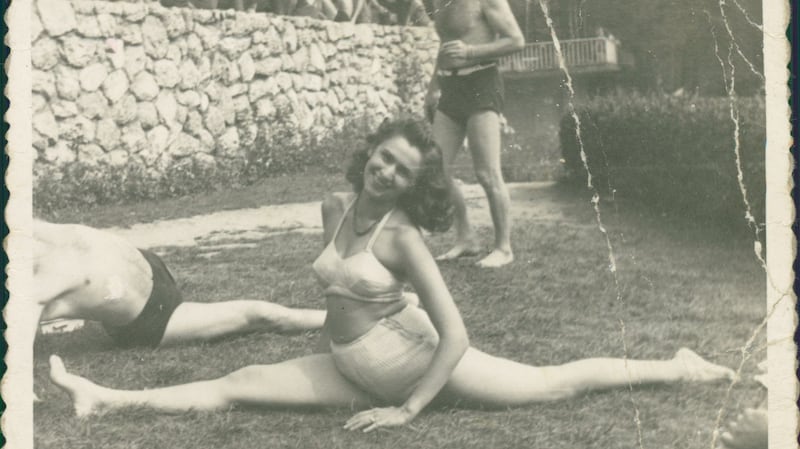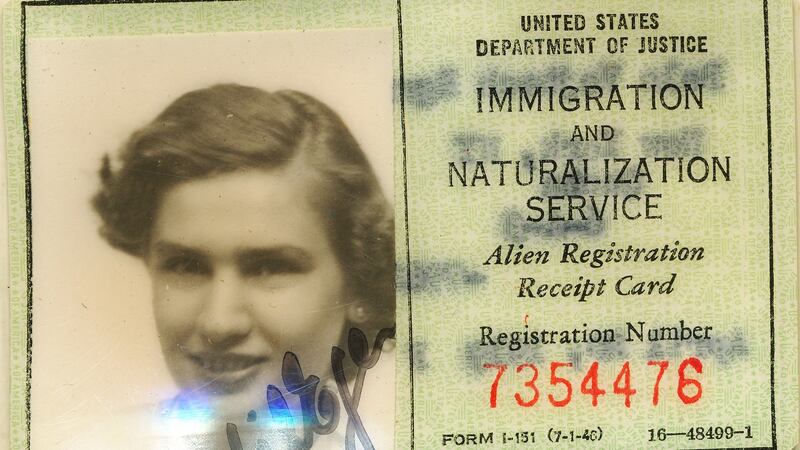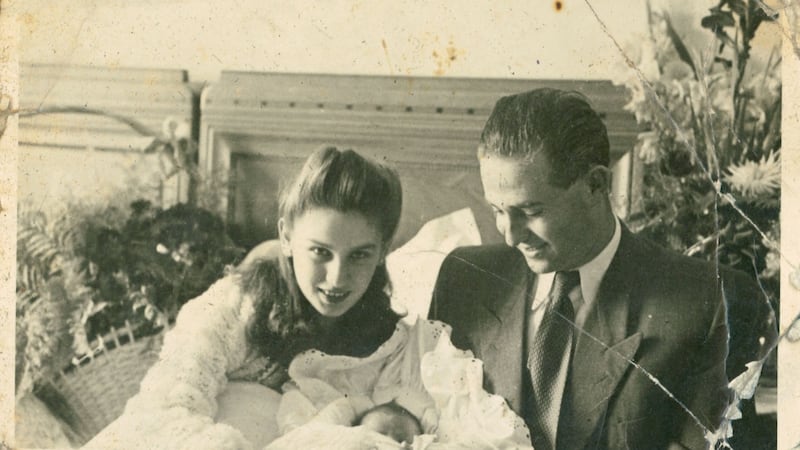"How can I be useful to you?" asks Edith Eger, after we've done a bit of introductory phone chit-chat. This, I know from reading her new book The Choice, is how Eger gets down to business. It's the question she addresses to her patients – soldiers suffering from post-traumatic stress, couples whose marriages are in trouble, addicts of one variety or another, victims of sexual abuse. Nearly 90, she is a practising psychologist, working from her home in La Jolla, California.
But Eger has more to offer than the average psychologist. As an Auschwitz survivor she has seen humanity at arguably its lowest point. In The Choice, she doesn't just tell the story of her experiences in the death camps, but also the story of afterwards: of how, slowly, painfully and with many setbacks, she found her way back to a full and joyous life.
“Hopefully people will find it useful,” she says of the book. “For themselves, where they are in their lives. To somehow let go of the past. Not overcome it. People tell me, ‘You overcame the past’, and I say ‘No. I have not. I didn’t overcome, and I will never forget – but I came to terms with it’. I think the Bible is so good when it talks about going through the valley of the shadow of death. But not to camp there. Not to set up house there.”
At the age of 16 Eger was sent to Auschwitz with her parents and sister. They didn’t know it then, but pretty much the entire Jewish population of the Hungarian town of Kosice – some 12,000 people, plus 2,000 from the surrounding countryside – had been rounded up and put in cattle cars.
We can choose what the horror teaches us. To become bitter in our grief and fear … Or to hold on to the childlike part of us, the lively and curious part, the part that is innocent
Her parents were executed on arrival at the camp. Edith and her sister had barely changed into their scratchy, ill-fitting grey uniforms when a uniformed Nazi officer arrived. It was Josef Mengele on his evening trawl through the barracks, searching for talented inmates to entertain him. On hearing that Edith had trained as a ballerina, he ordered her to dance. As she did so, she could hear him discuss with another officer which of the hundred girls present should be killed next. “If I miss a step, if I do anything to displease him, it could be me,” she writes. “I dance. I dance. I am dancing in hell…”
By the end of the war Eger and her sister Magda had been taken to work in a thread factory, then marched to a camp called Gunskirchen – where, because she could no longer walk, Edith was thrown on to a pile of corpses. (It later transpired that she had broken her back.)
When American GIs arrived at the camp, she was so weak that she couldn’t move or speak. There’s nothing glorious about Eger’s account of her liberation: it reads more like the hallucination of a starving, dying woman.
‘I had survivor’s guilt’
Does Eger feel that, as one of the few people still living who can recount a first-hand experience of the Shoah, it’s particularly important to tell her story? “I owe it to my parents,” she says, in her rapid-fire, strongly-accented English. “You know, I was very suicidal after I was liberated. I was in hospital. I had no hair. I had typhoid fever. I was in a cast because my back had to be adjusted – and, I tell you, I’d get up in the morning and I had nothing to get up for.
“I knew my parents are not gonna come back, and somehow reality hit me. I never thought I deserved to survive. Not only I had survivor’s guilt, but I also had shame.
"Then I began to think – if I'm gonna live, I need to be for something. Not just against something, but for life. And for being a functional human being."

It was the beginning of a long road road to recovery – and one of the choices to which the book’s title refers. “The more choices you have, the more doors open up for you,” Eger says.
“Even in Auschwitz there were choices. I saw people attacking the guards, and they were shot right away. As human beings we have this automatic response – either fight, or run – that’s automatic.
“But I recognised that in Auschwitz I couldn’t fight. I would have been shot. And I couldn’t run, because if I touched the barbed wire I would have been electrocuted.”
Another of the choices Eger made, soon after the war, was to have a baby. “The doctor told me that I’m too weak to have a child,” she says. “He scheduled an abortion. I said to the doctor, ‘Sir, I wanna give life’. Today I tell people, ‘Get a second opinion’. My little girl was a 10-pounder.”
Her daughter Marianne, she adds proudly, is now over six feet tall, a brilliant child psychologist with an office on Park Avenue in New York and a husband who won the Nobel Prize for economics.
The decision to go to the US was another difficult choice for Eger and her family. After a shaky start, the country was good to her. Does it sadden her to see what’s happening now, both in the US and in the world at large?
“Yes,” she says. “But there is good in everything because, you know, what I’m seeing now is that young people speak up. That’s good. And they march. They wanna have a better America.
Nazi Germany to US prejudice
“I came to America in 1949 and I worked in a factory doing piece work. When I went to the bathroom, I saw a sign saying ‘coloured’. It was very, very difficult for me to come from Nazi Germany to America and see that there is prejudice. So I always went to the coloured bathroom. I got together with the NAACP [National Association for the Advancement of Coloured People]. I marched with Martin Luther King. I was in Washington in 1963, singing with the Mamas and the Papas and all that.
“I think love is not what you say – it’s what you do. I ask people to commit themselves to peace and form a human family, so we can really empower each other with our differences. Not to kick each other into submission. That would be the beginning of the end of democracy.”

Working together and helping others, she says, enabled her to survive Auschwitz. “Co-operation, not competition. Not domination. Because all we had was each other then – and all we have is each other now.”
So it wasn’t about the survival of the fittest? “No, no,” she says. “The inner strength. The perseverance. That is what I have developed. That’s why I tell people – don’t look for happiness. That comes from outside. You were born with love and you were born with joy. That comes from inside.”
Eger’s conclusion is that we “can choose what the horror teaches us. To become bitter in our grief and fear … Or to hold on to the childlike part of us, the lively and curious part, the part that is innocent.”
‘Happiest days of my life’
More than half a century after the horrors of the second World War, having cared for her family – she now has three great-grandchildren – and her many patients, how does Eger care for herself?
She laughs. “Well, I just had some Hungarian salami, and you know what? It’s not good for me. I was told to stay away from red meat and such. I think I could eat better. I don’t drink or smoke. I go swing dancing once a week. I work out – again, I could work out more.

“When I go to a party everybody asks me, ‘Edie, what you gonna have? What you gonna have?’ I have berryade. Fizzy water. I don’t like to medicate my brain. I like to be fully there.
“That’s what Auschwitz taught me: how can you find joy within you. I’m gonna be 90 next month, but these are the happiest days of my life. I work every day, I see my patients and I talk about the choices – whether you want to be a victim or whether you want to be a survivor. And not only a survivor but a thriver.”
The Choice, by Edith Eger, is published by Rider, €14.99





